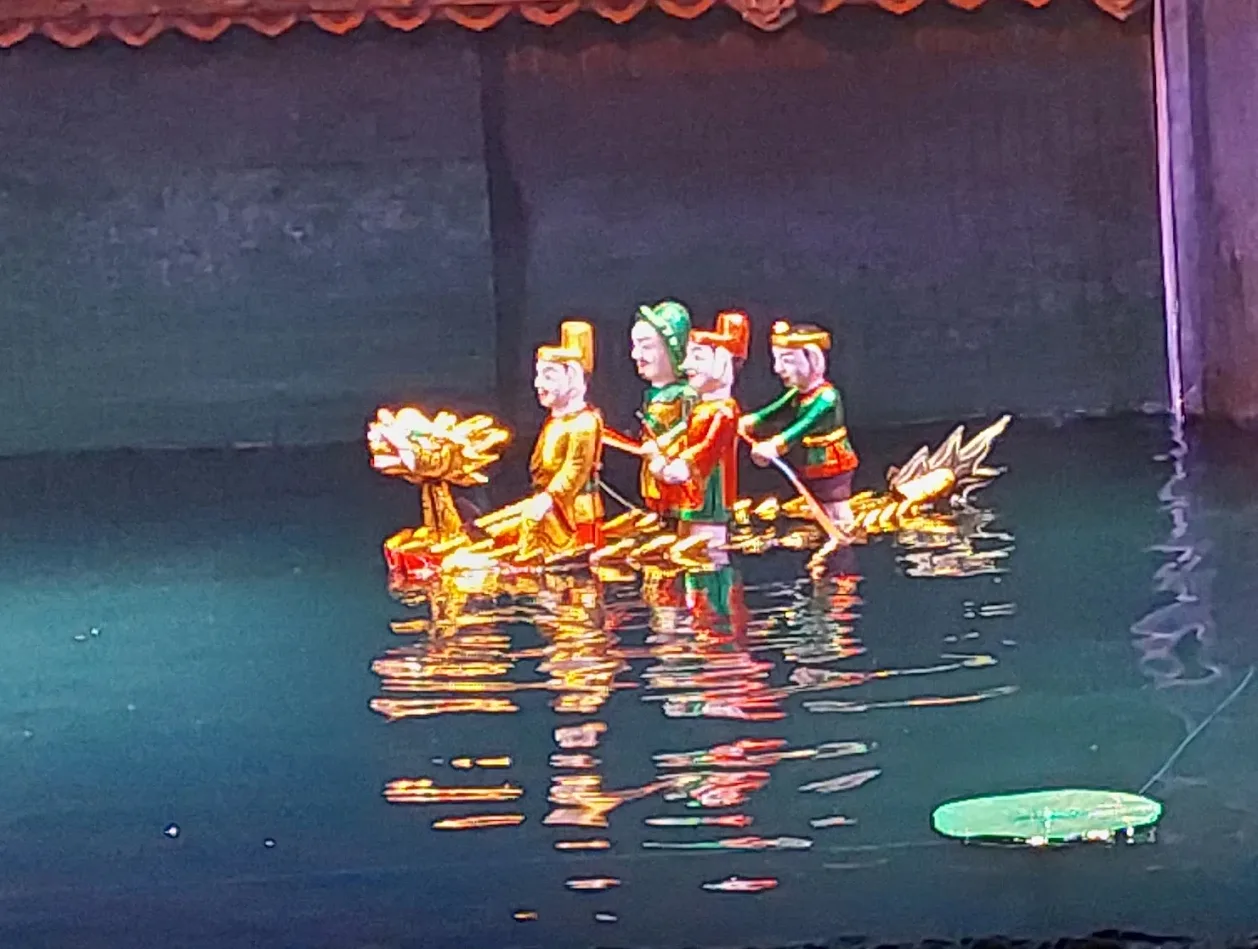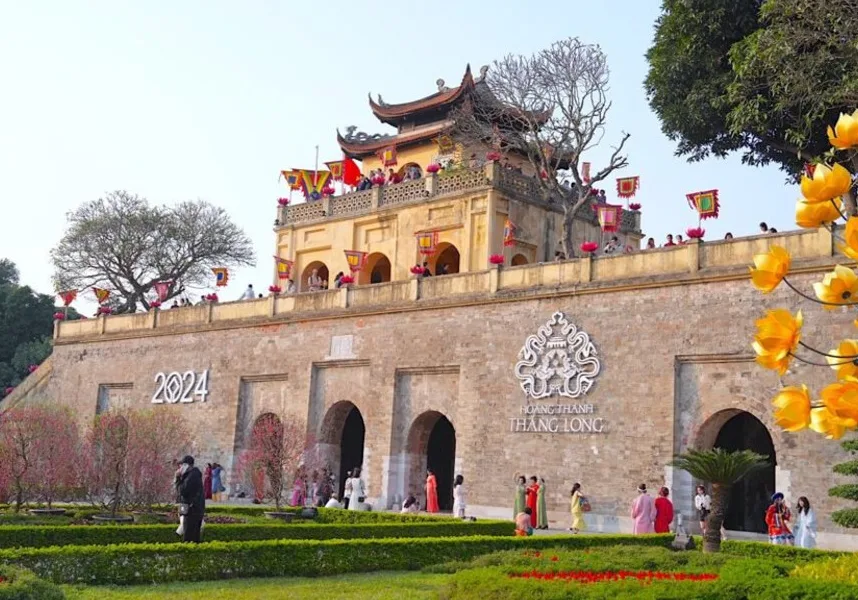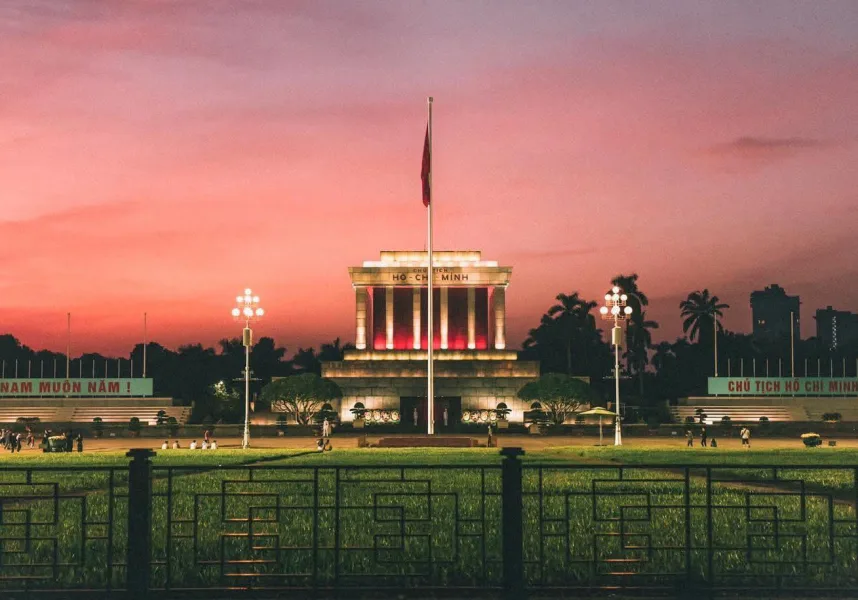
🎎 Hanoi Water Puppet Show: Discovering Vietnam’s Traditional Performing Art
Hanoi — with its serene lakes, leafy streets, and nostalgic Old Quarter — is not just a city of history, but also a cradle of art. Among its many cultural treasures, the Water Puppet Show stands out as one of Vietnam’s most fascinating traditions.
Dating back to the 11th century, water puppetry originated in the Red River Delta, where villagers performed on flooded rice paddies to celebrate harvests and festivals. Today, the art form continues to thrive, bringing audiences into a world that feels both mystical and deeply rooted in daily Vietnamese life.
🎭 1. The Journey to the Water Puppet Theatre
That evening, I strolled from Hoan Kiem Lake through Hanoi’s narrow, lantern-lit streets toward the Thang Long Water Puppet Theatre, the most famous venue in the city. The air was cool and fragrant with the scent of grilled street food, laughter echoing from small eateries.
Passing through the lively alleys, I could feel the city’s rhythm — a blend of nostalgia and modern buzz. Inside the theatre, however, the atmosphere shifted completely: quiet anticipation filled the room, as if everyone was waiting for magic to begin.
💧 2. Entering the World of Water Puppetry
The stage is a shallow pool of water — the “theater” where the puppets perform. Hidden behind a screen, skilled puppeteers use long bamboo rods and underwater mechanisms to bring wooden figures to life.
When the spotlight hits, reflections shimmer on the water’s surface, creating a dreamlike world of movement and color.
It’s mesmerizing to see wooden buffaloes plow the fields, cranes soar gracefully, or characters like Chu Dong Tu and Ly Thong come alive through the rippling water. The illusion is so complete, it’s easy to forget these are just puppets — not living, breathing beings.
🎶 3. Folk Music That Tells the Story
No Water Puppet Show is complete without traditional Vietnamese music. The performance is accompanied by live musicians playing drums, cymbals, the dan bau (monochord), and bamboo flutes, weaving melodies that match the rhythm of each story.
As a wooden buffalo puppet pulled a plow through the shimmering water, I could almost smell the rice fields and hear the trickle of streams. The blend of sound and movement made it feel like stepping into a living painting of Vietnamese countryside life.
🐉 4. Legends and Daily Life Come Alive
Each vignette portrays a slice of Vietnamese folklore — from epic legends like Chu Dong Tu and Thach Sanh, to simple scenes of market days, harvests, and village festivals.
I was captivated by the small details: the ducks gliding across the surface, a tiny bamboo bridge, or a puppet fisherman casting his net. Every gesture carried the care and artistry of generations. It wasn’t just entertainment — it was storytelling, culture, and memory combined.
🙌 5. Interactive and Joyful Moments
Some shows invite audience participation — clapping to the rhythm, playing small instruments, or even interacting with the puppets. It’s joyful, spontaneous, and creates a genuine sense of connection.
I joined in by tapping along to the drumbeat, and for a moment, I felt part of the story. The echoes of the music mixed with laughter and splashing water — a truly one-of-a-kind experience.
🎯 Tips for Enjoying the Hanoi Water Puppet Show
Book tickets in advance: Evening shows are popular, especially during peak travel season.
Sit close to the water stage: The front rows give the best view of the puppets and lighting effects.
Arrive 10–15 minutes early: Take in the ambience and browse local souvenirs in the lobby.
Learn the legends beforehand: Knowing the characters adds depth to your experience.
Photography: Some shows allow filming — just avoid flash to protect the puppets and atmosphere.
Conclusion
Watching the Water Puppet Show in Hanoi is like stepping into Vietnam’s living history — a performance that bridges the past and present through art, music, and storytelling.
Standing before the water stage, listening to traditional melodies, and watching wooden puppets dance gracefully across the water, I felt a deep connection to Vietnamese culture — timeless, poetic, and full of life.
If you ever visit Hanoi, don’t miss this cultural gem. It’s more than a show; it’s a window into the heart of Vietnam.


Comments (0)